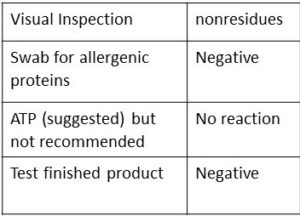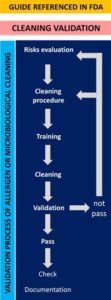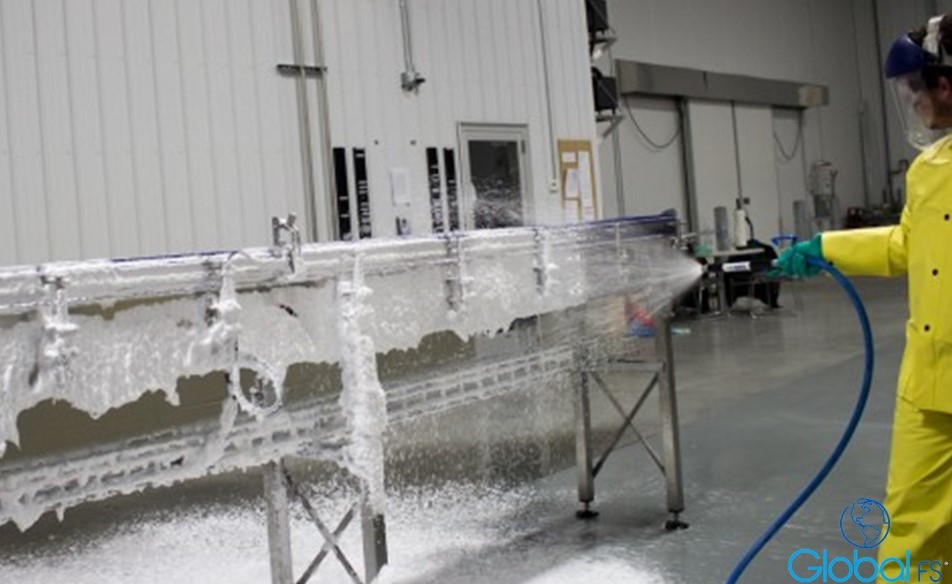LINES WITH ALLERGEN INGREDIENTS
The presence of an allergen in a product that it should never have been is one of the most common causes that occurs in the food industry and that puts a consumer’s life at risk. There are different risk factors that are at stake and determinants to achieve a correct validation of the procedure designed to avoid cross contact that leads to food contamination.
TYPE OF RESIDUE
Foods are processed with a very large variety of ingredients and that these can in their mixture have a characteristic or shape.
That form comes from how I add the ingredient or condition that comes from origin, powdered, totally dry or wet when liquid is added. The questioning, how is the condition of the equipment surface?; How easy to be removed?
CLEAN METHOD
There will be several available methods that the industry can use, however, not all are applicable in certain processes.
- Wet Cleaning
- Dry Cleaning
- Controlled wet cleaning
- Drag cleaning
Wet cleaning would be the most appropriate, since it must involve detergents and logically sanitizers. However, we must be careful, an antibacterial agent, no matter how good it is, will eliminate protein traces of allergens.
Dry cleaning is one of the most controversial due to the absence of water. Can we validate a dry cleaning ?; Yes, as long as brushing, vacuuming or “mopping” and the non-use of pressurized air, it could be the worst cleaning method when used uncontrollably.
SANITARY DESIGN
The surface of the equipment plays an important role in the effectiveness of the cleaning, especially when the allergen is presented in a wet form, where the texture of the equipment will allow a proper drag with the combination of rinse water and a brushing. There are dead spots such as, equines with a 90 ° angle, non-sanitary welds, easy disassembly of small parts and type of surface that can influence the approval of a validation or not.
The cleaning by purging or dragging product, typically this type of cleaning is used when the ingredients are presented in dry form, carry out a drag of a product prior to a production and we have no options for easy disassembly and the “inert” material used for the Purge will be reused again in the formula that has been purged because it contains this material or at its best decision will be discarded.
The validation is intended to verify if the designed cleaning procedure ensures that it is effective in removing all traces of allergen.
A validation is approved if the following showed in the table 1 below is achieved after a change of line:

Table 1. Verification Method and its detection
SENSITIVE LINES TO MICROBIOLOGICAL CONTAMINATION (READY TO EAT FOOD)
HIGH RISK OF MICROBIOLOGICAL CONTAMINATION
Foods considered as sensitive or easy to be contaminated by microorganisms, or simply because of its intention to use as ready to eat, may require a cleaning validation that guarantees the logarithmic reduction of indicators or negative presence of pathogenic microorganisms that may affect the food and endanger the health of the consumer.
For this validation it is necessary to take into account factors similar to the allergenic validation and samples are always taken in zones 1 and 2 after cleaning.
IMPORTANT
Take care of the relationship of making swabs in zone 1 for pathogens and the days of release of your product to the market. Avoid a recall!




